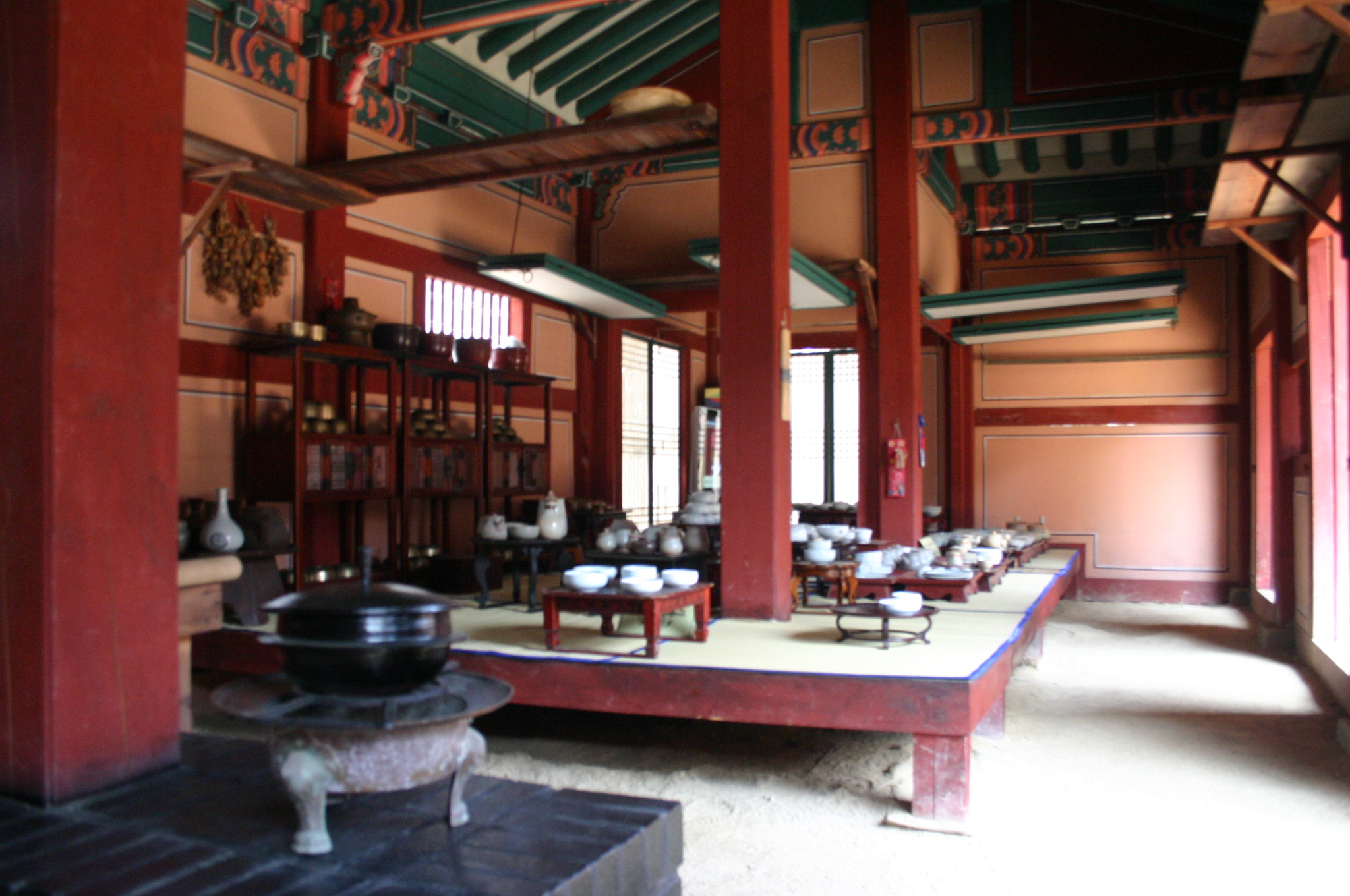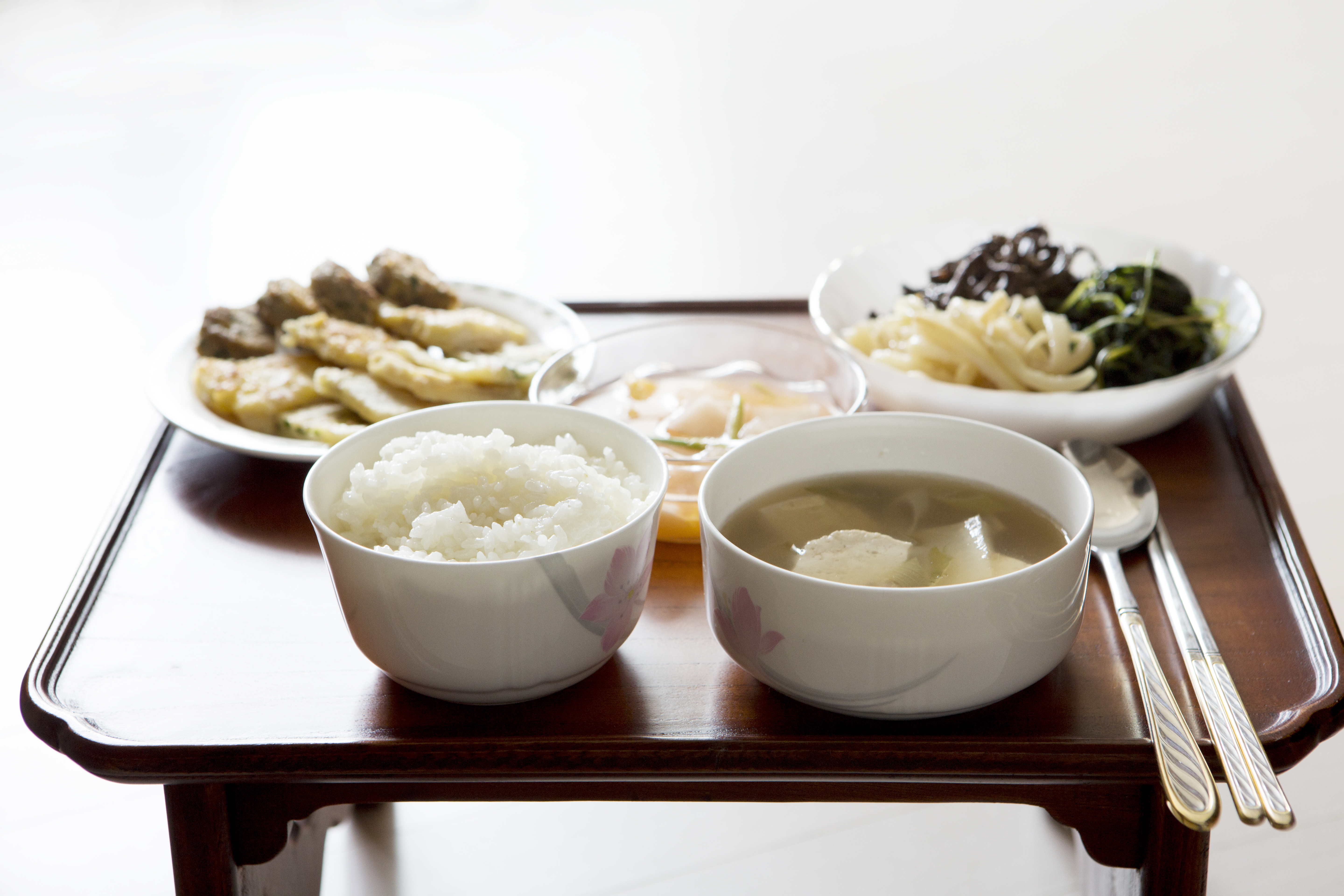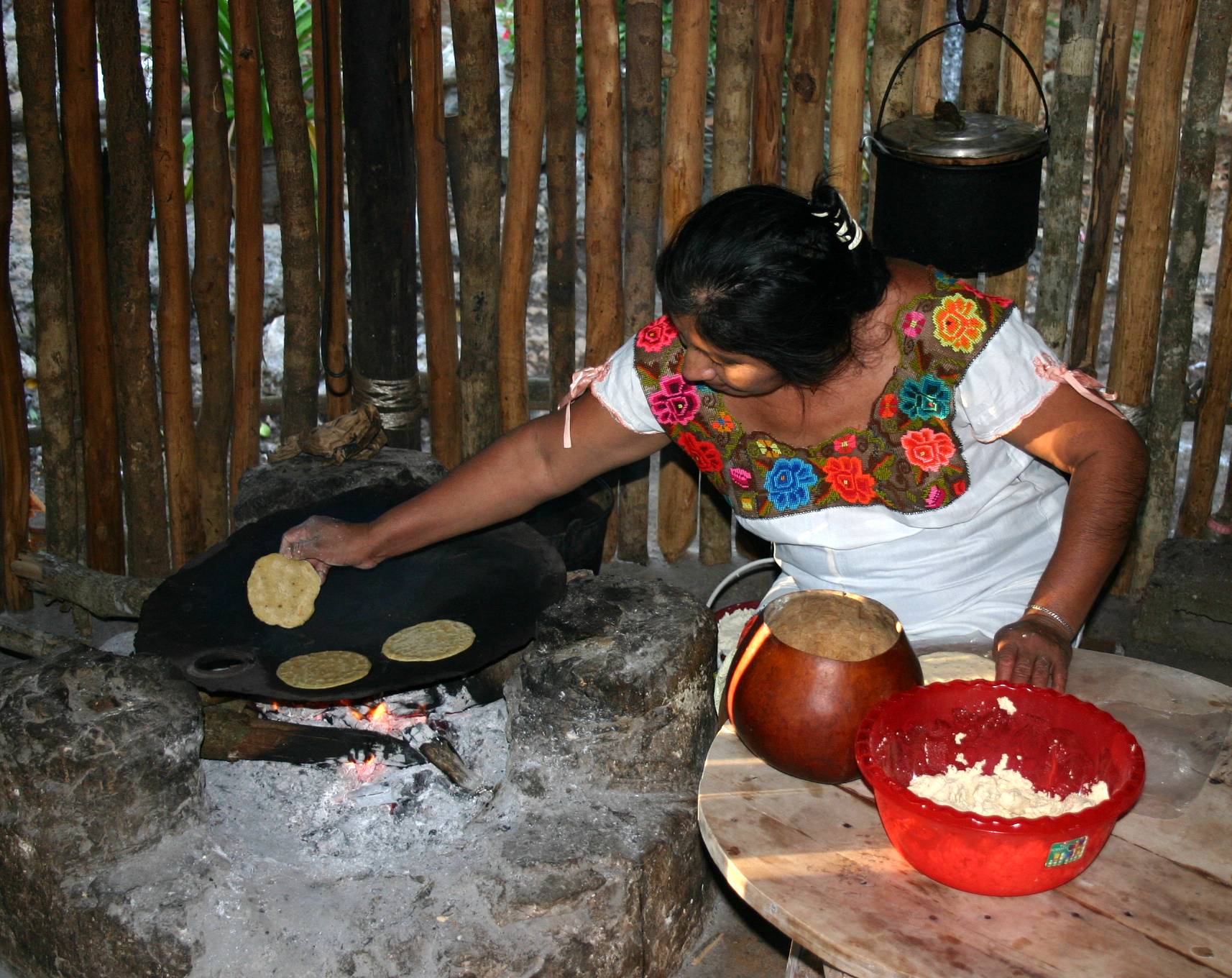|
Gujeolpan
''Gujeolpan'' refers to either an elaborate Korean dish consisting of nine different foods assorted on a wooden plate with nine divided sections in an octagon shape or the plate itself. The name is composed of three hanja words: ''gu'' (구, "nine" ), ''jeol'' (절, "section"), and ''pan'' (판, "plate") in Korean. Foods are separated by color and ingredients, and comprise various ''namul'' (seasoned leaf vegetables), meats, mushrooms, and seafood items. In the center of the tray is a stack of small '' jeon'' (Korean style pancakes) made with wheat flour, which are called ''miljeonbyeong'' (밀전병). In addition to its use as a food platter used to serve many dishes of food at once, ''gujeolpan'' is also considered a decorative item. It is said to be a well-being food that looks beautiful, tastes good, and is nutritionally balanced. History and aesthetic appeal The history of ''gujeolpan'' dates back as early as the 14th century, and has become closely associated with the Joseo ... [...More Info...] [...Related Items...] OR: [Wikipedia] [Google] [Baidu] |
Sinseollo
''Sinseollo'' * () or royal hot pot is an elaborate dish consisting of meatballs, small and round '' jeonyueo'' (전유어), mushrooms, and vegetables cooked in a rich broth in Korean royal court cuisine. The dish is a form of ''jeongol'' (elaborate chowder-like stew). It is served in a large bundt pan-shaped vessel with a hole in the center, in which hot embers are placed to keep the dish hot throughout the meal. Etymology and history ''Sinseollo'' is the proper name for the cooking vessel in which this dish is served, which has come to mean the actual dish as well.Sinseollo at Britannica Korea ''Sinseollo'' is a composite word of ''sinseon'' (hangul:신선, hanja:神仙), " Taoist immortal spirit" and ''ro'' (hangul:� ... [...More Info...] [...Related Items...] OR: [Wikipedia] [Google] [Baidu] |
Korean Royal Court Cuisine
Korean royal court cuisine (''Joseon Wangjo Gungjung yori'') was the style of cookery within Korean cuisine traditionally consumed at the court of the Joseon Dynasty, which ruled Korea from 1392 to 1910. There has been a revival of this cookery style in the 21st century. It is said that twelve dishes should be served along with rice and soup, with most dishes served in ''bangjja'' ( bronzeware). History Collectively known as ''gungjung eumsik'' during the pre-modern era, the foods of the royal palace reflected the opulent nature of the past rulers of the Korean peninsula. The opulent nature of the royalty is evidenced in examples as far back as the Silla kingdom, where a man-made lake (Anapji Lake, located in Gyeongju), was created with multiple pavilions and halls for the sole purpose of opulent banquets and a spring fed channel, Poseokjeong, was created for the singular purpose of setting wine cups afloat during the writing of poems. Reflecting the regionalism of the kingdoms ... [...More Info...] [...Related Items...] OR: [Wikipedia] [Google] [Baidu] |
Korean Cuisine
Korean cuisine has evolved through centuries of social and political change. Originating from ancient agricultural and nomadic traditions in Korea and southern Manchuria, Korean cuisine reflects a complex interaction of the natural environment and different cultural trends. Korean cuisine is largely based on rice, vegetables, seafood and (at least in South Korea) meats. Dairy is largely absent from the traditional Korean diet. Traditional Korean meals are named for the number of side dishes (반찬; 飯饌; ''banchan'') that accompany steam-cooked short-grain rice. Kimchi is served at nearly every meal. Commonly used ingredients include sesame oil, ''doenjang'' (fermented bean paste), soy sauce, salt, garlic, ginger, ''gochugaru'' (pepper flakes), '' gochujang'' (fermented red chili paste) and napa cabbage. Ingredients and dishes vary by province. Many regional dishes have become national, and dishes that were once regional have proliferated in different variations ... [...More Info...] [...Related Items...] OR: [Wikipedia] [Google] [Baidu] |
EncyKorea
The ''Encyclopedia of Korean Culture'' is a Korean language encyclopedia published by the Academy of Korean Studies and DongBang Media Co. The articles in the encyclopedia are aimed at readers who want to learn about Korean culture and history, and were written by over 3,800 scholars and expert contributors — mainly associated with the Academy of Korean Studies. ''Munhwa Ilbo'' called it the most extensive encyclopedia of Korean studies. In 2001, the digital edition EncyKorea was published on CD-ROM and DVD. See also *''Doosan Encyclopedia'' *List of digital library projects *Lists of encyclopedias *List of encyclopedias by branch of knowledge *List of encyclopedias by language *List of historical encyclopedias *List of online encyclopedias This is a list of well-known online encyclopedias—i.e., encyclopedias accessible or formerly accessible on the Internet. The largest online encyclopedias are general reference works, though there are also many specialized ones. Some o ... [...More Info...] [...Related Items...] OR: [Wikipedia] [Google] [Baidu] |
Namul
Namul ( ko, 나물) refers to either a variety of edible grass or leaves or seasoned herbal dishes made of them. Wild greens are called ''san-namul'' (, "mountain namul"), and spring vegetables are called ''bom-namul'' (, "spring namul"). On the day of Daeboreum, the first full moon of the year, Koreans eat ''boreum-namul'' (, "full moon namul") with five-grain rice. It is believed that boreum namuls eaten in winter help one to withstand the heat of the summer to come. Preparation and serving For namul as a dish, virtually any type of vegetable, herb, or green can be used, and the ingredient includes roots, leaves, stems, seeds, sprouts, petals, and fruits. Some seaweeds and mushrooms, and even animal products such as beef tendons are also made into namuls. Although in most cases the vegetables (and non-vegetable namul ingredients) are blanched before being seasoned, the method of preparation can also vary; they may be served fresh (raw), boiled, fried, sautéed, fermente ... [...More Info...] [...Related Items...] OR: [Wikipedia] [Google] [Baidu] |
Ssam
' (), meaning "wrapped", refers to a dish in Korean cuisine in which, usually, leafy vegetables are used to Wrap (sandwich), wrap a piece of meat such as pork or other filling.쌈 (Ssam) ''Encyclopedia of Korean Culture'' It is often accompanied by a condiment known as and can also be topped with raw or cooked garlic, onion, bell pepper, green pepper, or a (small side dish) such as kimchi. is usually bite-sized to prevent spilling out the fillings. History Under the Buddhism, Buddhist influence that was especially strong during the Kingdom of Goryeo, killing and eating an animal was highly discouraged. This has led numerous Korean vegetable dishes, especially ssam, to be created and emerge as a prominent dish during the era. After i ...[...More Info...] [...Related Items...] OR: [Wikipedia] [Google] [Baidu] |
Jeon (food)
''Jeon'' ( ko, 전, 煎) is a fritter in Korean cuisine made by seasoning whole, sliced, or minced fish, meat, vegetables, etc., and coating them with wheat flour and egg wash before frying them in oil. ''Jeon'' can be made with ingredients such as fish, meat, poultry, seafood, and vegetable, and be served as an appetizer, a ''banchan'' (side dish), or an '' anju'' (food served and eaten with drinks). Some jeons are sweet desserts; one such variety is called ''hwajeon'' (literally "flower ''jeon''"). Names Although ''jeon'' can be considered a type of ''buchimgae'' in a wider sense, ''buchimgae'' and ''jeons'' are different dishes. ''Jeons'' are smaller and made with fewer ingredients than ''buchimgae''. ''Jeon'' can also be called ''jeonya'' (), especially in Korean royal court cuisine context. ''Jeonya'' is sometimes called ''jeonyueo'' () or ''jeonyuhwa'' (). The variety of jeon made for jesa (ancestral rite) are called ''gannap'' (). ''Gannap'' are usually made of ... [...More Info...] [...Related Items...] OR: [Wikipedia] [Google] [Baidu] |
Mareun Anju
''Anju'' ( ) is a Korean term for food consumed with alcohol. It consists of a variety of foods, including both main dishes and side dishes. Consuming food with alcohol is a widespread practice in Korea, especially when the alcoholic beverage soju is involved. Certain types of foods consumed primarily as anju include golbaengi muchim, nogari with peanuts, and jokbal. History Until the Chosun Dynasty, alcohol was mainly served in (a type of inn or tavern), where soups with rice, along with traditional alcohol such as , were served to guests. Since the introduction of beer and Western foods into Korea, mainly from Japan in the nineteenth century, bars and pubs have enjoyed a newfound popularity, and many types of Western foods have been consumed as anju. By types of beverage Some foods are considered to be best complemented by certain types of alcohol. For example, samgyeopsal, grilled pork belly, is considered to go best with soju, while fried chicken or Korean seasoned ... [...More Info...] [...Related Items...] OR: [Wikipedia] [Google] [Baidu] |
Mother Of Pearl
Nacre ( , ), also known as mother of pearl, is an organicinorganic composite material produced by some molluscs as an inner shell layer; it is also the material of which pearls are composed. It is strong, resilient, and iridescent. Nacre is found in some of the most ancient lineages of bivalves, gastropods, and cephalopods. However, the inner layer in the great majority of mollusc shells is porcellaneous, not nacreous, and this usually results in a non-iridescent shine, or more rarely in non-nacreous iridescence such as ''flame structure'' as is found in conch pearls. The outer layer of cultured pearls and the inside layer of pearl oyster and freshwater pearl mussel shells are made of nacre. Other mollusc families that have a nacreous inner shell layer include marine gastropods such as the Haliotidae, the Trochidae and the Turbinidae. Physical characteristics Structure and appearance Nacre is composed of hexagonal platelets of aragonite (a form of calcium carbona ... [...More Info...] [...Related Items...] OR: [Wikipedia] [Google] [Baidu] |
Tortilla
A tortilla (, ) is a thin, circular unleavened flatbread originally made from maize hominy meal, and now also from wheat flour. The Aztecs and other Nahuatl speakers called tortillas ''tlaxcalli'' (). First made by the indigenous peoples of Mesoamerica before colonization, tortillas are a cornerstone of Mesoamerican cuisine. Corn tortillas in Mesoamerica are known from as early as 500 BCE. Varieties Corn tortilla Tortillas made from nixtamalized maize meal—masa de maíz— are the oldest variety of tortilla. They originated in Mexico and Central America, and remain popular throughout the Americas. Peoples of the Oaxaca region in Mexico first made tortillas at the end of the Villa Stage (1500 to 500 BC). Towards the end of the 19th century, the first mechanical utensils for making tortillas, called tortilla presses, tortilleras, or tortilladoras, were invented and manufactured in Mexico. Wheat tortilla Europeans introduced wheat and its cultivation to the America ... [...More Info...] [...Related Items...] OR: [Wikipedia] [Google] [Baidu] |
Yangban
The ''yangban'' () were part of the traditional ruling class or gentry of dynastic Korea during the Joseon Dynasty. The ''yangban'' were mainly composed of highly educated civil servants and military officers—landed or unlanded aristocrats who individually exemplified the Korean Confucian form of a " scholarly official". They were largely government administrators and bureaucrats who oversaw medieval and early modern Korea's traditional agrarian bureaucracy until the end of the dynasty in 1897. In a broader sense, an office holder's family and descendants, as well as country families who claimed such descent, were socially accepted as ''yangban''. Overview Unlike noble titles in the European and Japanese aristocracies, which were conferred on a hereditary basis, the bureaucratic position of ''yangban'' was granted by law to ''yangban'' who meritoriously passed state-sponsored civil service exams called ''gwageo'' (). This exam was modeled on the imperial examinations first s ... [...More Info...] [...Related Items...] OR: [Wikipedia] [Google] [Baidu] |
Pearl S
A pearl is a hard, glistening object produced within the soft tissue (specifically the mantle) of a living shelled mollusk or another animal, such as fossil conulariids. Just like the shell of a mollusk, a pearl is composed of calcium carbonate (mainly aragonite or a mixture of aragonite and calcite) in minute crystalline form, which has deposited in concentric layers. The ideal pearl is perfectly round and smooth, but many other shapes, known as baroque pearls, can occur. The finest quality of natural pearls have been highly valued as gemstones and objects of beauty for many centuries. Because of this, ''pearl'' has become a metaphor for something rare, fine, admirable and valuable. The most valuable pearls occur spontaneously in the wild, but are extremely rare. These wild pearls are referred to as ''natural'' pearls. ''Cultured'' or ''farmed'' pearls from pearl oysters and freshwater mussels make up the majority of those currently sold. Imitation pearls are also widely s ... [...More Info...] [...Related Items...] OR: [Wikipedia] [Google] [Baidu] |







